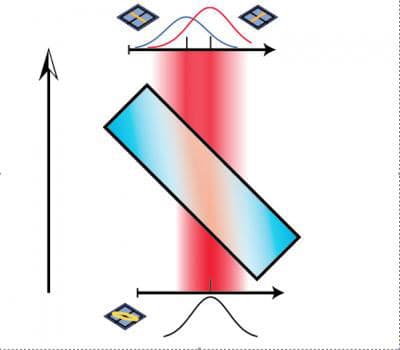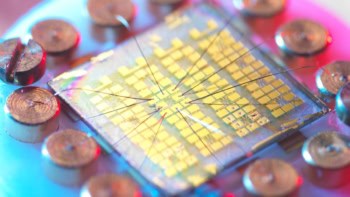
Physicists in Canada and the US claim to be the first to make a direct measurement of the polarization quantum state of light – a feat that at first glance appears to defy Heisenberg’s uncertainty principle. The technique, which relies on a process known as weak measurement, could help in fundamental studies on quantum mechanics or in the development of quantum computing.
In quantum mechanics, it is normally considered impossible to know everything about a system at one time. Measure the position of a particle accurately, for instance, and the particle’s momentum will suddenly become very ill defined. Physicists call pairs of variables such as position and momentum “conjugate”: they are innately connected, such that the measurement of one essentially destroys information about the other.
On the face of it, this phenomenon – which is enshrined in Heisenberg’s famous uncertainty principle – restricts the information that physicists can gain from studying quantum systems. But in the last 20 years, new techniques have been developed to get a better handle on uncertainty and the exact limit it presents. Known as weak measurements, they involve taking tiny “peeks” at quantum systems, so that information can be gained bit by bit, without greatly affecting the system itself.
Reconstructing the wavefunction
In 2011 physicists at the National Research Council (NRC) in Ottawa, Canada, claimed that they could use weak measurement to directly reconstruct a system’s wavefunction, which describes how a quantum system evolves over time. Before weak measurement, wavefunctions had only been measured indirectly in a technique known as quantum tomography. This latter technique involves making many different conventional measurements on equivalent quantum systems – single photons emerging from the same source, for example. This information is then processed to create a map of the quantum state.
The NRC group’s technique involved making a “weak” measurement of the position of a photon followed by a “strong” conventional measurement of its momentum. By repeating the process many times, the information gained from the weak measurements ramped up until the researchers had effectively got the same amount of information from doing two strong measurements. As a result, they were able to reconstruct the wavefunction in a single sitting.
“Not just a fluke”
Robert Boyd and colleagues at the University of Ottawa and University of Rochester have built on the NRC work by applying weak measurement to the polarization states of light. “It demonstrates a second example of a situation in which direct measurement can be used to determine a quantum wavefunction,” says Boyd. “It shows that the earlier result was not just a fluke.”
The polarization of light can be described using different orthogonal bases, including horizontal–vertical and diagonal–antidiagonal. As with position and momentum, these bases are conjugate – a measurement of the horizontal–vertical polarization, for example, should destroy information about the diagonal–antidiagonal polarization and vice versa.
The team used birefingent crystals to make its measurements. When a beam of light passes through such a crystal, the light is deflected according to its polarization – with the amount of deflection depending on the thickness of the crystal. Boyd and colleagues used a thin birefingent crystal to perform a weak measurement of the horizontal–vertical polarization, and then a thick crystal to perform a strong measurement of the diagonal–antidiagonal polarization. By performing this process many times for identical photons in a stream, they could gradually build up a complete knowledge of both polarizations. Then, having inferred the value of the third, left-or-right, polarization, they could reconstruct the polarization state in full.
Jeff Lundeen, a member of the NRC group that measured the spatial wavefunction in 2011, believes the latest study is important because polarization is a discrete, “two-level” variable – as opposed to position and momentum, which are continuous. It is the two-level nature of polarization – equivalent to a binary one and zero – that lends it to quantum computing, where it forms the basis of quantum bits of information, or qubits. The techniques of Boyd and colleagues will therefore be of great interest to those developing quantum computing, Lundeen says.
Bona fide quantum state
Howard Wiseman at Griffith University in Brisbane, Australia, calls the result a “generalization” of the 2011 result. However, he points out that by forcing a system to divulge its wavefunction directly, the researchers may be losing some of the “mathematical requirements” that a bona fide quantum state should exhibit. “Given that experiments are prone to error, it remains to be seen how useful this technique will be,” he says.
Boyd’s group is now building on its technique. The researchers would like to understand how a quantum wavefunction becomes distorted, such as when a photon passes through turbulence in the Earth’s atmosphere. “Such measurements are needed for the implementation of quantum communications,” Boyd says.
The results are published in Nature Photonics.



